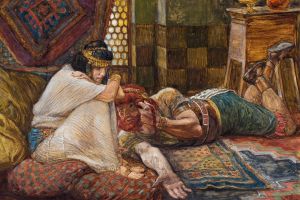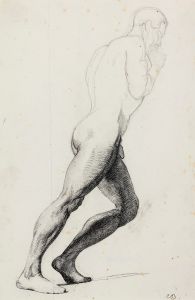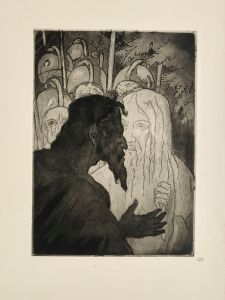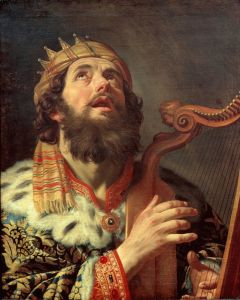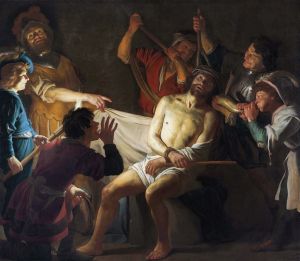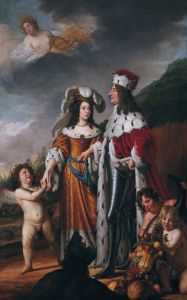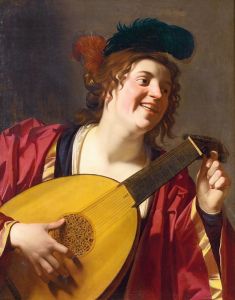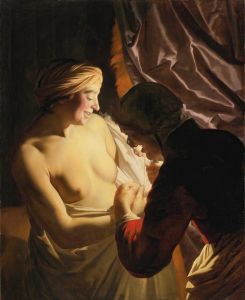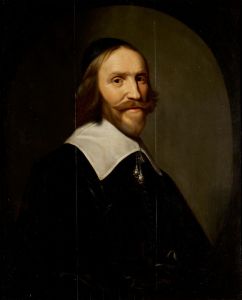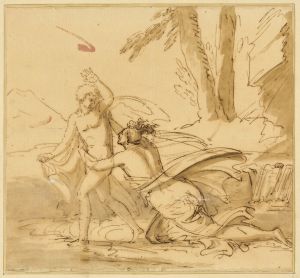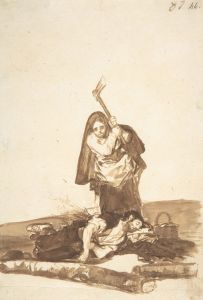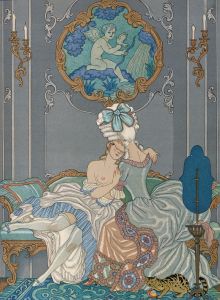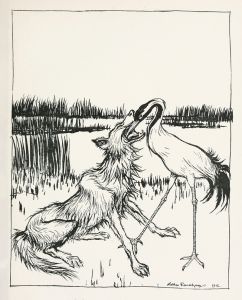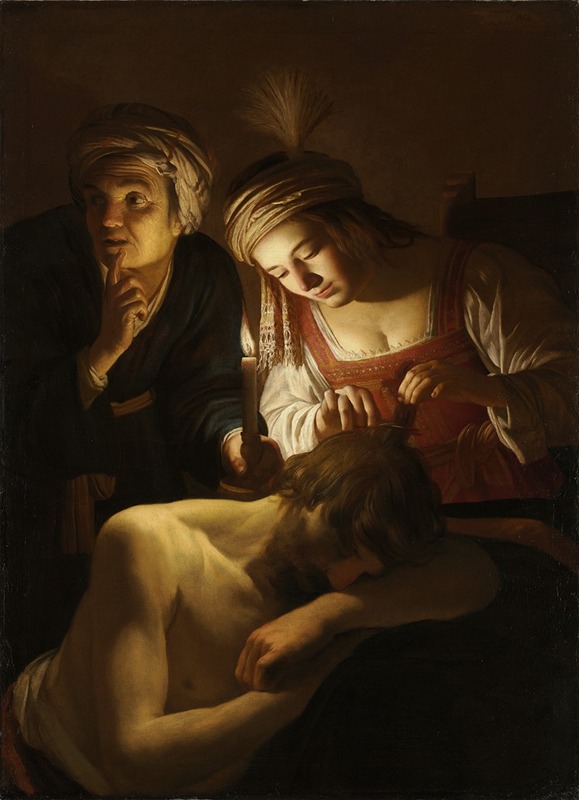
Samson and Delilah
A hand-painted replica of Gerard van Honthorst’s masterpiece Samson and Delilah, meticulously crafted by professional artists to capture the true essence of the original. Each piece is created with museum-quality canvas and rare mineral pigments, carefully painted by experienced artists with delicate brushstrokes and rich, layered colors to perfectly recreate the texture of the original artwork. Unlike machine-printed reproductions, this hand-painted version brings the painting to life, infused with the artist’s emotions and skill in every stroke. Whether for personal collection or home decoration, it instantly elevates the artistic atmosphere of any space.
Gerard van Honthorst's painting "Samson and Delilah" is a Baroque artwork created by the Dutch artist, who was renowned for his mastery of chiaroscuro and his ability to depict dramatic scenes with vivid lighting. The painting illustrates the biblical story of Samson and Delilah, a tale from the Book of Judges in the Old Testament. This narrative centers on the betrayal of Samson, a man of extraordinary strength, by Delilah, who conspires with the Philistines to discover the secret of his power.
In the painting, Honthorst captures the climactic moment when Delilah cuts Samson's hair, the source of his strength, rendering him powerless. The scene is imbued with tension and drama, characteristic of Baroque art. The use of light and shadow is particularly striking, as Honthorst employs his signature technique of tenebrism to focus the viewer's attention on the central figures. The light illuminates Delilah and Samson, emphasizing their expressions and actions, while the surrounding figures and background remain in shadow, creating a sense of intimacy and immediacy.
Honthorst's depiction of Delilah is notable for its detail and emotional complexity. She is often shown with a mix of determination and treachery, reflecting her role in the story. Samson, on the other hand, is portrayed as vulnerable and unaware of the betrayal, adding to the poignancy of the scene. The inclusion of other figures, such as the Philistines waiting in the shadows, heightens the tension and foreshadows the consequences of Delilah's actions.
The painting is an excellent example of Honthorst's ability to convey narrative through composition and lighting. His work was heavily influenced by Caravaggio, whose dramatic use of light and shadow had a profound impact on Baroque art. Honthorst, sometimes referred to as "Gherardo delle Notti" (Gerard of the Nights) due to his skill in painting nocturnal scenes, brought this technique to the Netherlands and became one of the leading artists of the Dutch Golden Age.
The exact date of creation for "Samson and Delilah" is not definitively known, but it is believed to have been painted during Honthorst's mature period, when he was at the height of his artistic career. The painting is housed in a museum or private collection, though its current location may vary depending on exhibitions or acquisitions.
As with many works of art from this period, "Samson and Delilah" reflects the cultural and religious themes of its time, offering insight into the moral and spiritual concerns of the Baroque era. It remains a significant example of Honthorst's contribution to the art world and his ability to bring biblical stories to life through his distinctive style.





